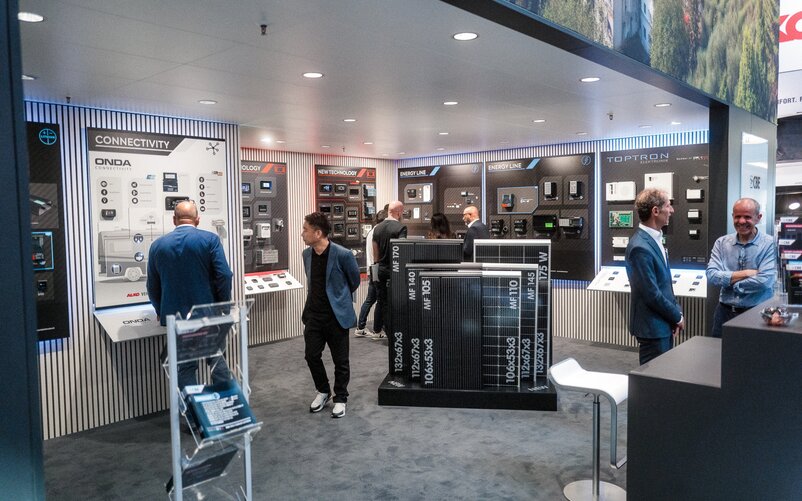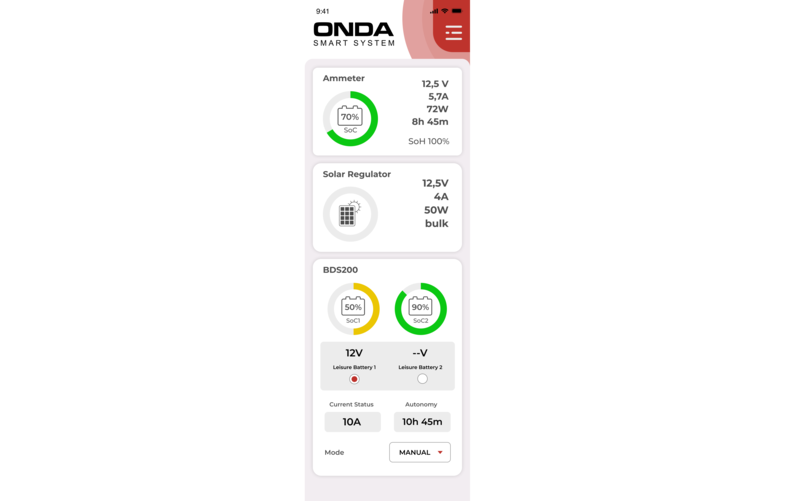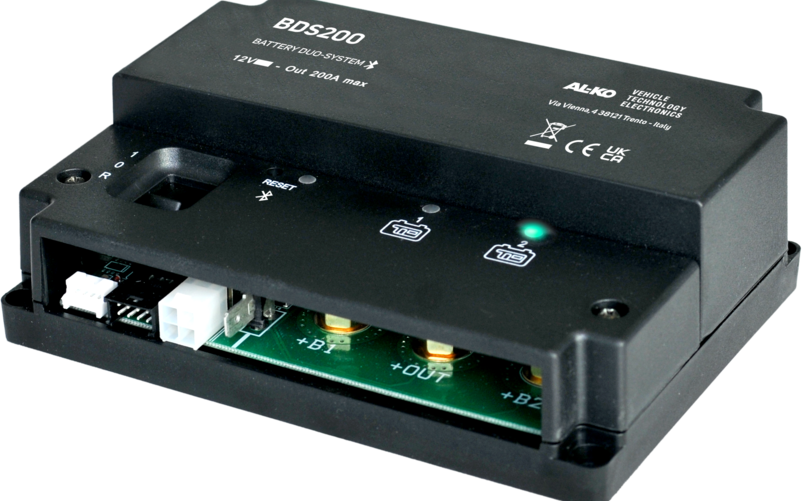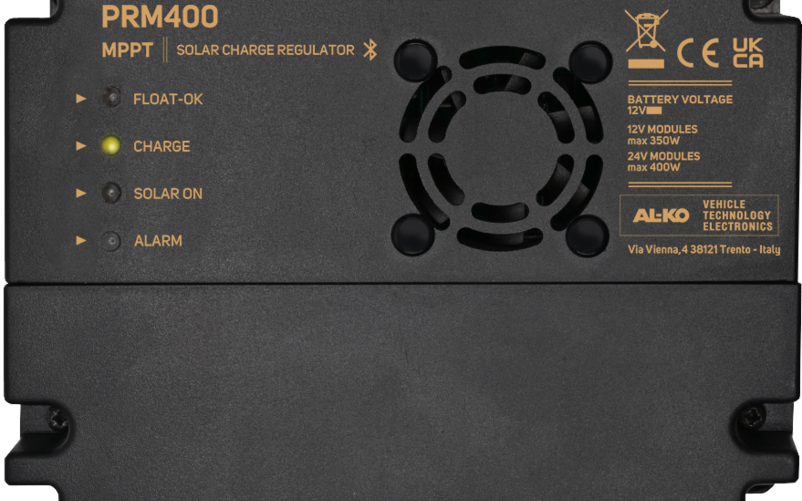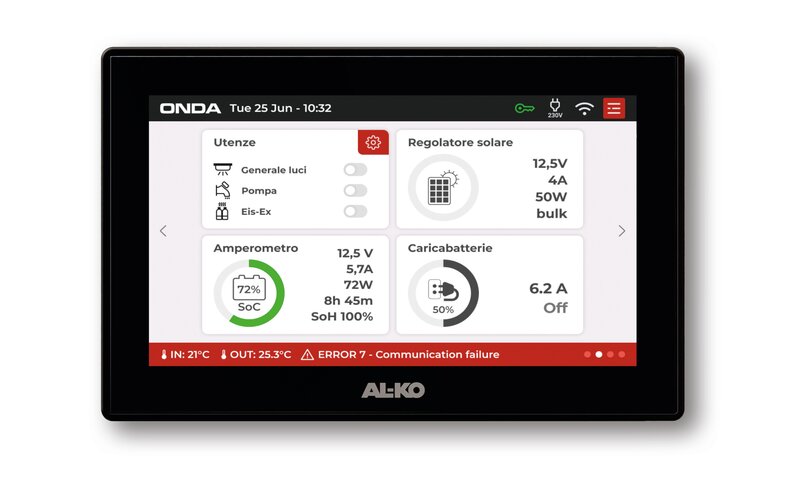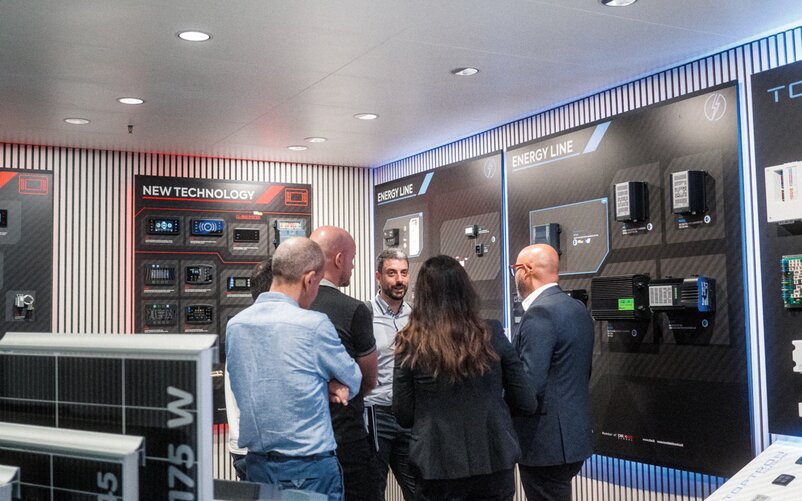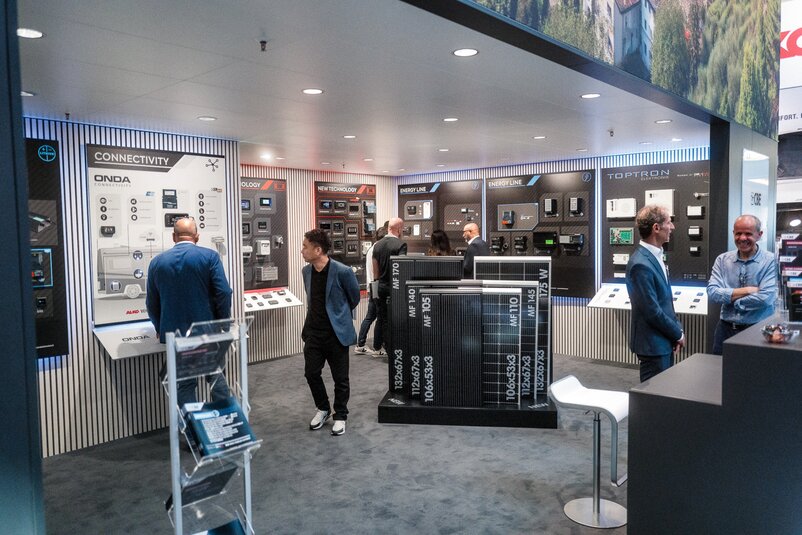The RV revolution: Modern electronic systems for campers
Imagine being able to control your entire home on wheels through smart technology: power supply, lights, heating, on-board batteries – all at the touch of a button or by voice command.
Thanks to AL-KO Vehicle Technology, with its electronics division and the associated brands Toptron, CBE and Nordelettronica, this vision is closer to reality than ever before.
Many modern camping vehicles – from compact vans to luxury motorhomes – are already equipped with our electronic systems. These not only take comfort to a whole new level, but also increase self-sufficiency and safety when travelling.
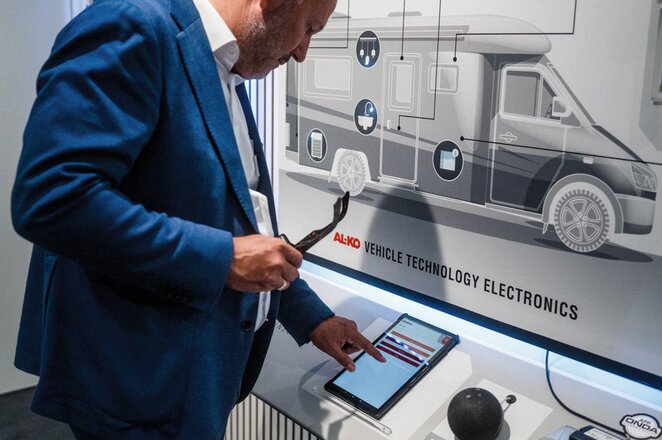
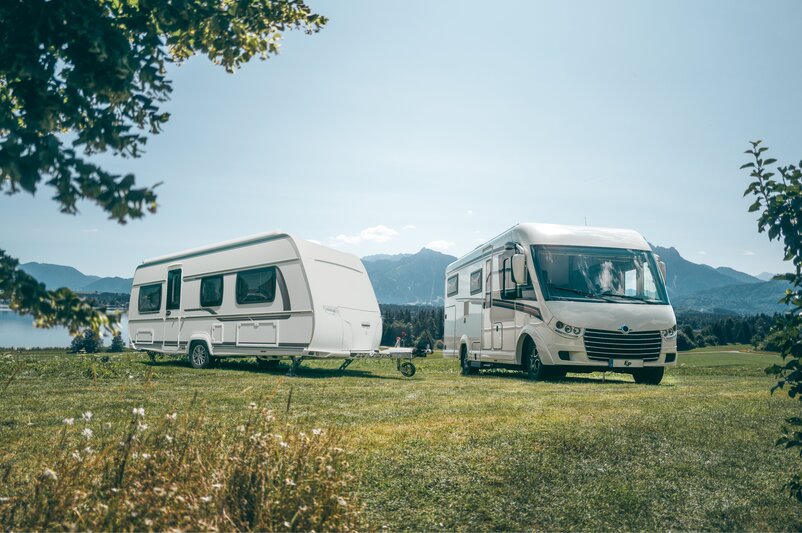
The most important points in brief
- Electronic networking improves user-friendliness, comfort, safety, energy efficiency and self-sufficiency in camping vehicles.
- AL-KO VTE is a system provider for electrical and electronic caravan infrastructure – including the complete, customer-specific wiring harnesses.
- AL-KO VTE takes care of the networking of all on-board components as well as energy management (batteries, photovoltaics).
In this article, we’ll guide you through the fascinating world of electric and electronic aids that can make your adventures in the great outdoors safer and more comfortable – and we’ll show you a glimpse into the future of camping.
The basics: Standard electronic systems in camping vehicles
Most modern leisure vehicles come from the factory ready-equipped with a range of electronic equipment. The scope varies depending on the vehicle class and type. A 12V/230V on-board power supply with various switches and sockets is now available in practically every camper vehicle, regardless of whether it is a caravan, motorhome or van. Beyond that, today’s vehicles usually come with the following components as well:
- Entry-class caravans: Control panels for lighting and heating as well as cable harnesses.
- Vans: Control panels for monitoring and controlling the on-board battery and energy management, including charge controllers for charge management while driving or at the campsite hook-up, as well as control of lights and other basic functions.
- Mid-range motorhomes: Special charge regulators and, increasingly, solar panels, which are often retrofitted.
- Larger, luxury-class motorhomes: Touch displays, voice control (e.g. Alexa and Siri), digital status checks and control options via app, which are often integrated into an existing bus system and require connection to the cloud.
Pimp your RV: Retrofits and modifications
Many camping vehicle owners choose to enhance their comfort and self-sufficiency further with retrofits. The most common retrofits include:
- Solar panels with charge regulators: often in combination with additional or higher-quality batteries.
- Inverters (converters): for converting direct current into alternating current.
- More powerful, digitally controllable chargers: for more efficient charging.
- Satellite and air-conditioning systems: to improve comfort.
It is important that these retrofits are compatible and safe. Products should comply with current standards and be compatible with each other in terms of both hardware and software.
Networking for even more comfort
Connectivity is a buzzword today – and has long been a staple of everyday life in houses and apartments. However, when it comes to camping vehicles, the intelligent networking of various devices has so far been more of a niche interest for “nerds”. But this is set to change rapidly, because the “Smart Camper” not only boosts convenience, but also increases the connected components’ safety and functionality.
Our ONDA app can be used to connect any devices with a CI bus interface. This allows commands to be executed, information to be read out and the devices’ performance to be monitored: This lets you keep an eye on lighting, water level, heating, interior and exterior temperature, battery charge, vehicle alignment and much more from a central location.
The app is also open to interfaces from other providers and can therefore also be used outside the AL-KO universe.
Self-sufficient camping vehicles: Electronics are key
Self-sufficient camping vehicles can run for several days without being connected to a stationary power grid. This is possible thanks to comprehensive electronic equipment that ensures the energy supply for heating, cooking, lighting, the refrigerator and hot water. The ignition and monitoring of gas-powered appliances is also usually electronic.
Hand in hand: Energy source synergy
Modern camping vehicles use various energy sources:
- Batteries: for basic supply and short self-sufficient downtimes.
- Solar panels: for longer parking times and sustainable energy generation.
- Generators: as an emergency supply, popular in Australia and New Zealand, for example.
These energy sources work together to ensure an efficient and sustainable power supply. Intelligent charge regulators and battery management systems play a crucial role here by monitoring charging currents, controlling the current consumption and optimally distributing the energy.
Safety and monitoring systems
Various assistants are used to ensure safety on board by monitoring all components independently and reacting to faults as needed.
- Fuse boxes: to detect and switch off faulty components.
- Lighting controls: to detect irregularities and automatic switch-offs.
- Distribution boxes: as a decentralized control system for rapid response to faults.
These systems are often integrated into a central control unit and offer comprehensive monitoring and safety.
Camping 4.0: Networking und software integration
Electronic networking in camping vehicles is often carried out via digital bus systems. The software plays a central role here and enables the systems to be controlled and monitored via mobile devices. Modern apps offer interfaces to external products and vehicles and stand for the safety and functionality of all electronics.
Future trends and innovations
Electronics in camping vehicles are becoming increasingly intelligent and networked. Future trends include:
- Expanded connectivity: connection to clouds for additional services.
- Comprehensive safety and comfort functions: such as assistance systems and information services.
- Self-management of systems: automatic messages about maintenance requirements and product availability.
- Integration of artificial intelligence (AI) and communication between different devices via networks (“Internet of Things”, IoT): for even more efficient and secure control and monitoring.
The continuous development of electronics will revolutionize the camping experience and set new standards in terms of comfort, safety and sustainability.
Launch into your vacation and the future with electronic helpers
The electronics in modern camping vehicles have developed considerably in recent years and offer numerous advantages. From self-sufficient energy supply to intelligent networking and control – the possibilities are almost limitless. For campers, this means more comfort, safety and independence on their travels. The future promises even more innovations and technological breakthroughs that will continue to improve the camping experience.
